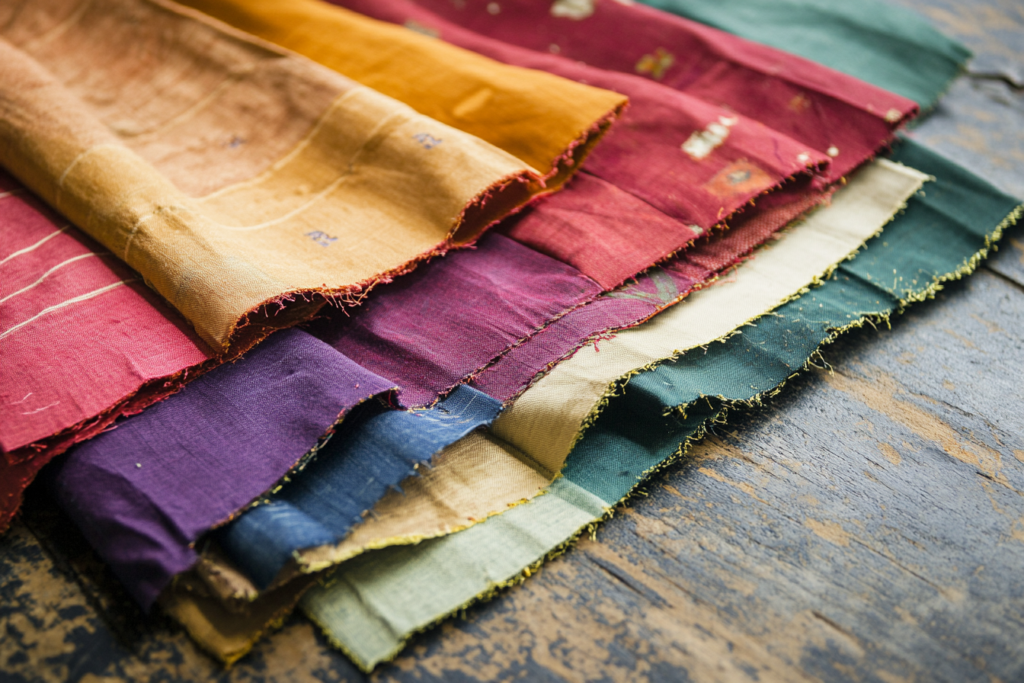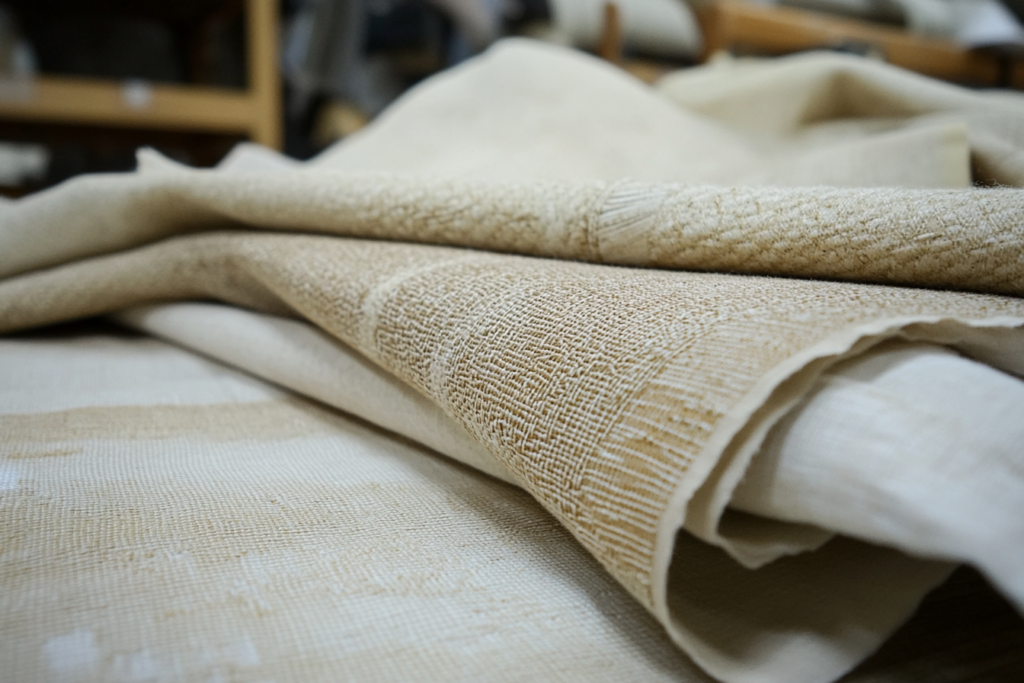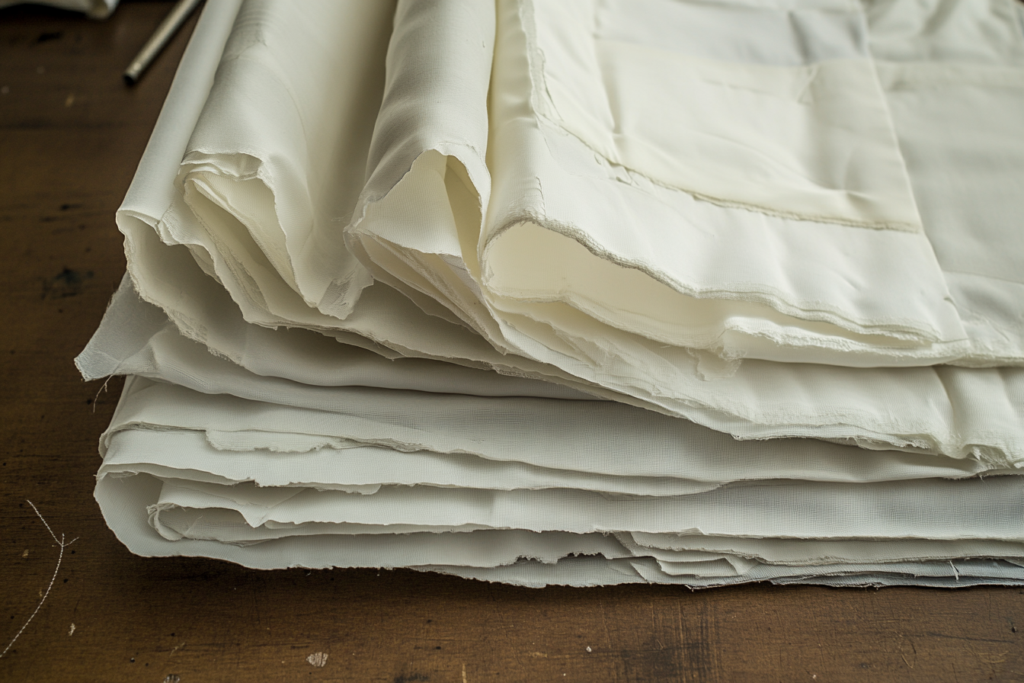Lay-Up: Preparing Fabric Layers for Precision Cutting
Meta Description: Lay-up is the process of arranging multiple layers of fabric and marking the top layer before cutting. Learn how this step ensures accuracy and efficiency in garment production.
What is Lay-Up in Fabric Cutting?
Lay-up is the process of spreading multiple layers of fabric before cutting, with cut marks placed on the top layer to guide precision cutting. This step is essential in mass production, tailoring, and fashion manufacturing to ensure fabric pieces are cut uniformly and efficiently.
The lay-up process maximizes fabric utilization, reduces waste, and helps achieve consistent garment sizing and design accuracy.


Key Features of Lay-Up in Textile Manufacturing
✔ Multiple Layers of Fabric Are Stacked – Optimizes cutting efficiency and material use.
✔ Cut Marks Are Placed on the Top Layer – Ensures accurate cutting lines for pattern shapes.
✔ Used in Mass Production & Tailoring – Common in factories, custom garment making, and fashion design.
✔ Enhances Fabric Utilization – Reduces material waste and improves cost efficiency.
✔ Prepares Fabric for Cutting Machines or Hand Cutting – Ensures clean, consistent cuts across layers.
Lay-Up Process: Step-by-Step
1️⃣ Fabric Layers Are Spread Evenly – Ensures tension-free, aligned fabric stacking.
2️⃣ Pattern Markings or Cut Guides Are Placed on the Top Layer – Helps workers or machines follow the correct cutting lines.
3️⃣ Alignment & Quality Checks Are Performed – Prevents shifting or misalignment between layers.
4️⃣ Fabric is Ready for Cutting – Using manual tools or automated cutting machines.
💡 Tip: Using computerized marking and cutting improves precision and efficiency in bulk production.
Types of Lay-Up Techniques
1. Manual Lay-Up
- Used in smaller production units or custom tailoring.
- Fabric layers are manually spread and marked before cutting.
2. Automatic Lay-Up
- Performed using spreading machines that layer fabric rolls evenly.
- Used in large-scale garment production for high efficiency.
3. Straight Lay-Up
- Fabrics are stacked without folds, ensuring consistent layering.
- Ideal for woven fabrics and structured garments.
4. Zigzag or Face-to-Face Lay-Up
- Fabric is folded back and forth in layers, reducing waste.
- Common in knitwear and fabrics with directional patterns.
Where is Lay-Up Used in the Fashion Industry?
📌 Mass Production Factories – Ensures consistent, high-volume cutting for brands.
📌 Tailoring & Bespoke Garments – Used in hand-cutting processes for custom-made clothing.
📌 Pattern Development & Sample Making – Helps designers test fabric placement before bulk production.
📌 Home Textiles & Upholstery – Used in curtains, furniture fabric cutting, and bedding production.
📌 Automated Cutting Systems – Integrated into CNC and laser cutting machines for precision.
Lay-Up vs. Fabric Layout vs. Fabric Spreading
| Feature | Lay-Up | Fabric Layout | Fabric Spreading |
|---|---|---|---|
| Definition | Stacking fabric layers before cutting | Arranging patterns on fabric for efficient use | Evenly distributing fabric for smooth cutting |
| Focus | Preparing for mass cutting | Maximizing fabric use | Ensuring fabric tension is balanced |
| Used In | Industrial cutting, tailoring | Garment pattern placement | Textile manufacturing & cutting rooms |
Lay-up is a crucial step before cutting, ensuring fabric layers are accurately aligned for precise production.
Why is Lay-Up Important in Garment Production?
✔ Ensures Accuracy in Cutting – Helps maintain uniformity in garment pieces.
✔ Reduces Fabric Waste – Maximizes material usage and cost efficiency.
✔ Prevents Shifting or Distortion – Keeps fabric aligned for clean cuts.
✔ Improves Production Efficiency – Speeds up mass garment manufacturing.
✔ Enhances Pattern Precision – Ensures pattern markings remain accurate for sewing.
Conclusion: The Role of Lay-Up in Fabric Cutting & Garment Manufacturing
Lay-up is a critical step in the apparel industry, ensuring fabric layers are properly stacked, aligned, and marked before cutting. Whether done manually or with automated machines, this process helps maintain consistency, reduce fabric waste, and improve overall production efficiency.
For designers, tailors, and manufacturers, understanding the lay-up process is essential for producing high-quality garments with precision and efficiency.



